*We have received many inquiries about protecting the lens when shooting. This article summarizes the results of testing the effects on images when a dome cover is used for the purpose of protecting the lens in a simplified way. This is a proposal as a method to protect the lens during video production, and DOES NOT TAKE OPTICAL ISSUES INTO CONSIDERATION. We ask for your understanding in this regard.
How to protect the fisheye lens?
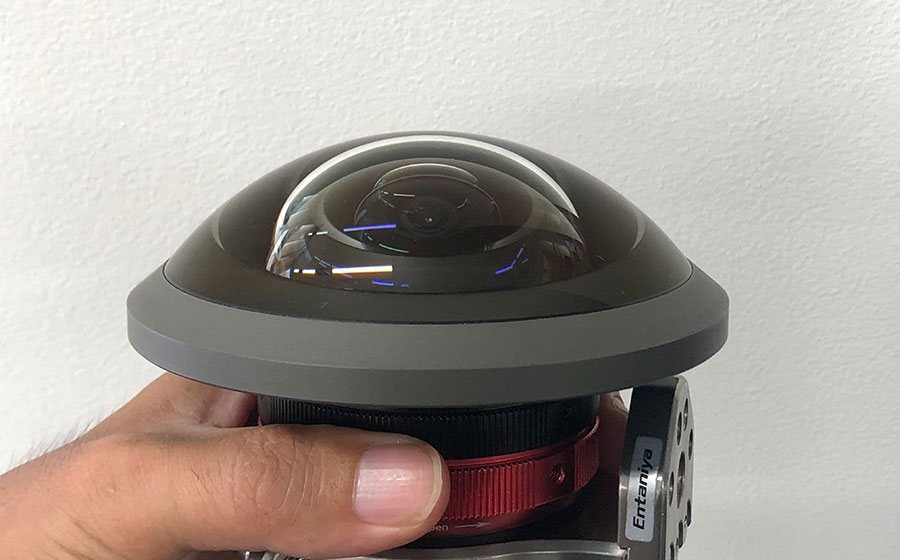
Fisheye lenses have a unique shape with the lens protruding forward.
Because the field of view is more than 180 degrees, objects around the lens will show up in the image, so a lens hood or lens protector cannot be used.
Therefore, fisheye lenses should be used without protective filters.
Afraid that a collision or mistake will damage the lens.
Users of Entaniya fisheye lenses often ask us, “Is there any way to protect the lens from damage?” This is a common question.
To protect the lens, you need something that physically covers the lens.
Generally, a lens hood, lens protector, or lens protector is used, but in the case of a fisheye lens, a lens hood or lens protector cannot be placed in front of the lens.
For fisheye lenses, it is necessary to use a dome-shaped cover.
How to use the dome cover
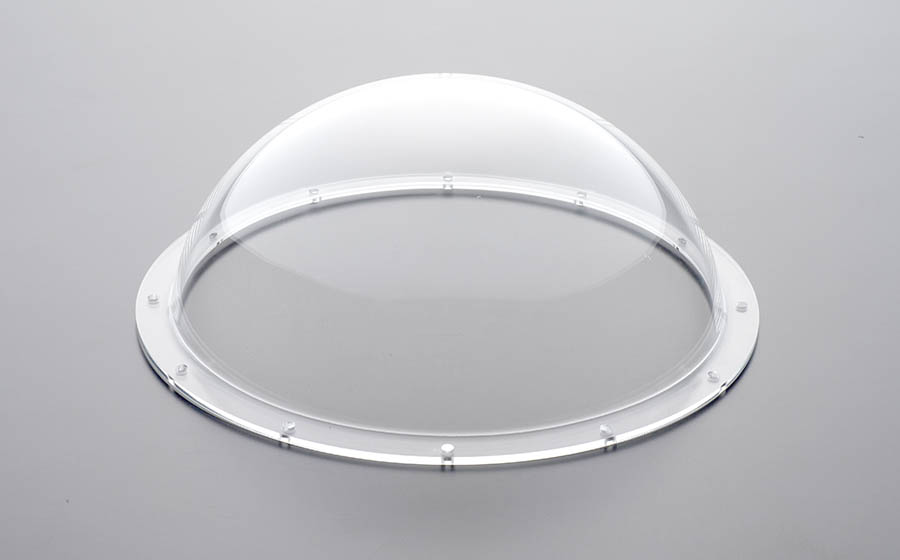
The simplest method for protecting a fisheye lens is to use a dome cover, but many people are concerned about the effect on image quality.
Will the field of view be narrowed?
Will sharpness be lost?
Certainly, the “naked eye” condition is the best way to maximize the lens specifications. Therefore, as a manufacturer, we really want people to use lenses without covers.
However, if there is a possibility of damaging the lens, it is better to protect the lens, and if you want to protect the lens, you must find a way to do so.
One of the ways we propose to do this is through the use of acrylic dome covers.
There are various types of dome covers, and the most ideal one would be a dome cover designed not to impair the optical performance of the lens used with it, but this is not very realistic considering the price and other factors.
Conversely, the most affordable will be acrylic dome covers. They are inexpensive and come in a variety of sizes, so you can find one that fits the size of the lens you are using.
Degradation of image quality when using acrylic dome covers
It is safe to assume that the use of acrylic dome covers will affect image quality to some degree.
However, if the purpose of use is not to obtain accurate information, such as measurements, the use of an acrylic dome cover may be well within the scope of consideration for the purpose of protecting the lens.
Taken with a fisheye lens with acrylic dome cover
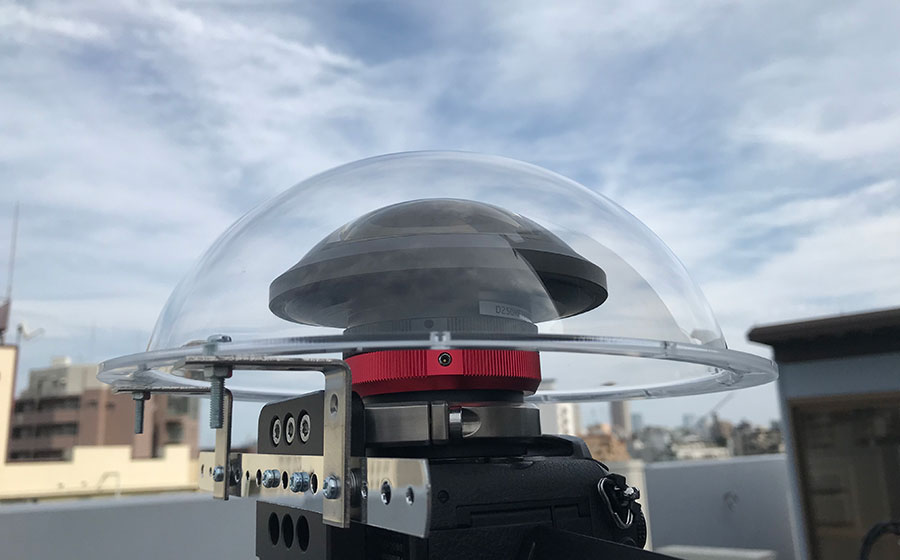
We conducted a simple test of the effect on image quality when a fisheye lens is covered with an acrylic dome cover.
We use acrylic dome covers sold by Entanya.
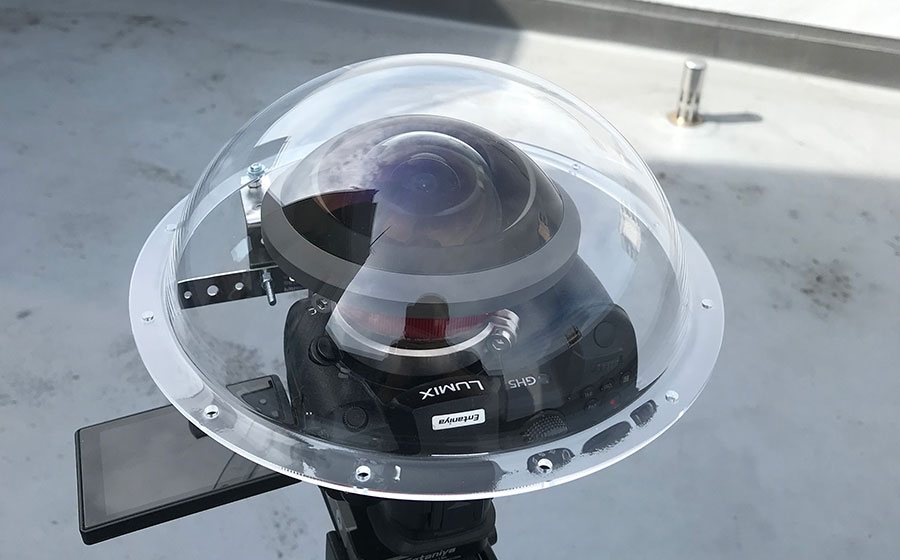
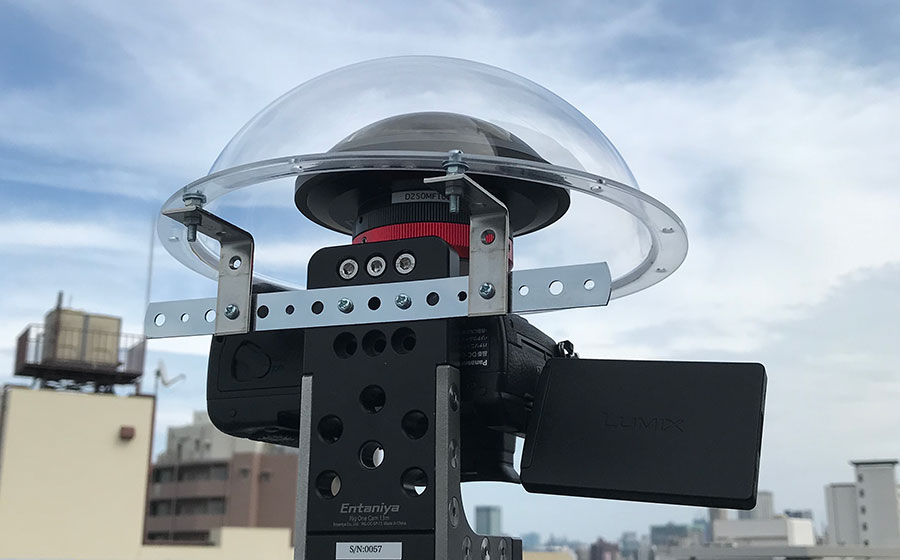
The mounting method is on a case-by-case basis, but in this case, I used an L-shaped rig (RIG-OC-13) for fixing the camera for zenith and a simple DIY installation with an assortment of hardware.
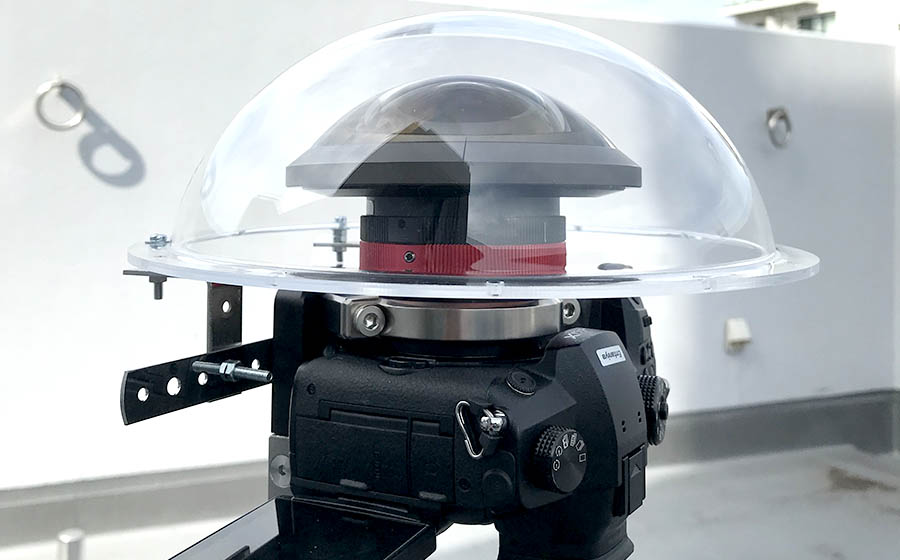
You also need to pay attention to the distance between the dome cover and the fisheye lens.
Be careful not to make contact.
Also, the position and angle at which the acrylic dome is installed may easily affect the image.
Sample of fisheye lens HAL 250 with dome cover
Without an acrylic dome cover
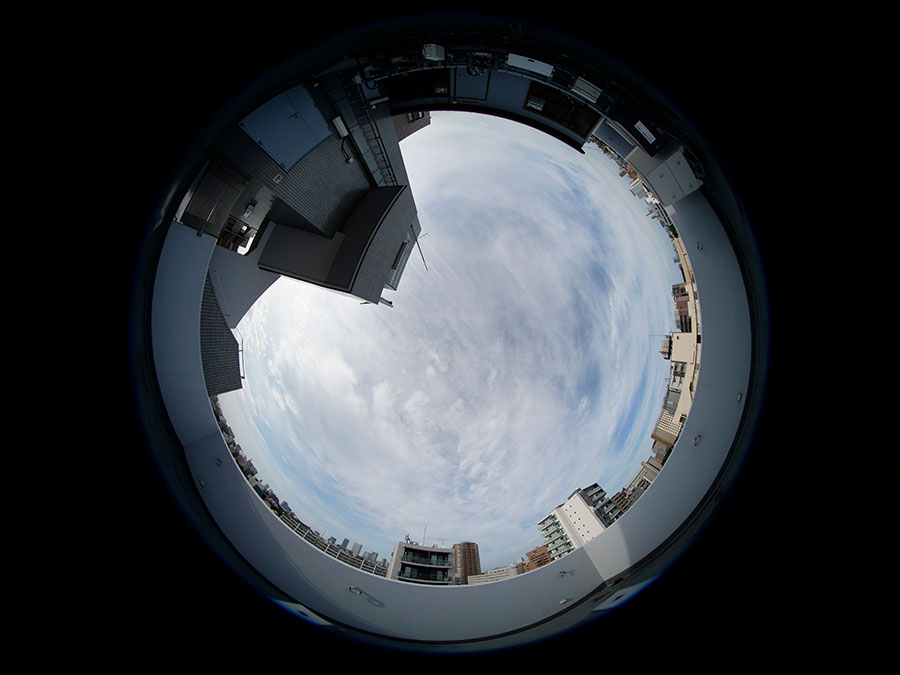
With a acrylic dome cover
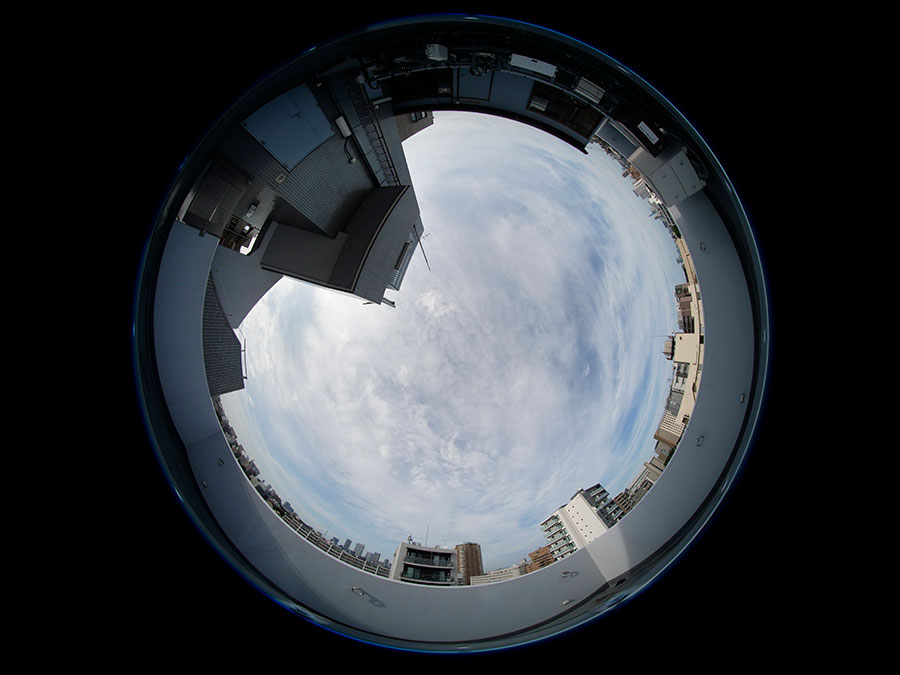
The 250-degree fisheye lens Entaniya Fisheye HAL 250 MFT 3.0 was tested with and without the acrylic dome cover.
Not much effect on angle of view
My biggest concern was the effect on the angle of view, but there seems to be almost no effect. (*HAL250 is a fisheye lens with a 250-degree field of view, so those with an acrylic dome cover can see the flange of the acrylic dome cover in the periphery of the image, but this can be avoided if the acrylic dome cover is placed a little lower.)
Little effect on sharpness.

The next concern was sharpness, but when I zoomed in and compared the images, I could feel the effect, but at a level that I am sure many people can tolerate.
Flare, ghosting, etc.
In this test, there was no direct sunlight or strong light, but since the acrylic dome cover is not coated with any particular coating, it is likely to be affected to some extent, but it may depend on the position of the acrylic dome cover, the position and intensity of the light, and other circumstances.
You can download the original shooting samples from the button below.
Sample of fisheye lens HAL 200 with dome cover
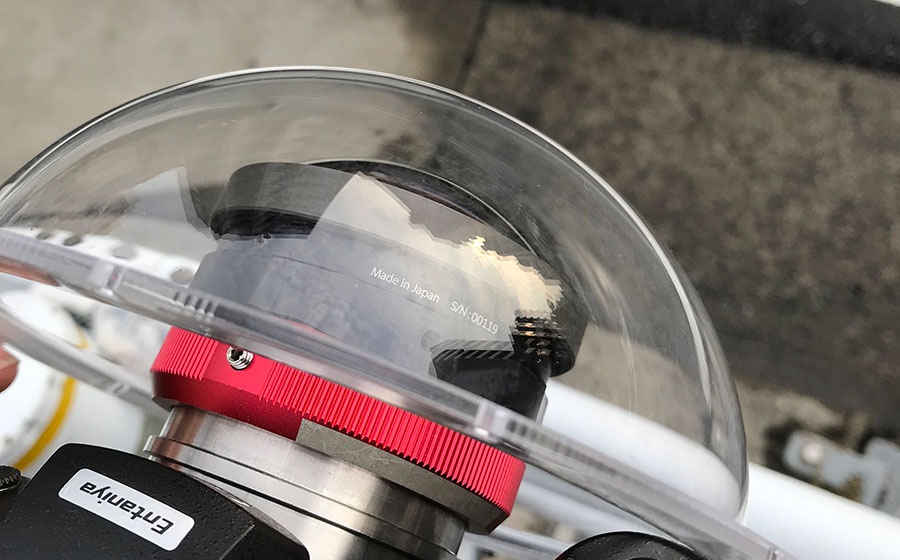
The Entaniya Fisheye HAL 200 is a fisheye lens with a 200-degree field of view, one size smaller than the HAL 250.
Compared to the HAL 250, the HAL 200 is a smaller and lighter lens that is often mounted on drones or used for acrobatic photography, and is often consulted for lens protection.
Without an acrylic dome cover
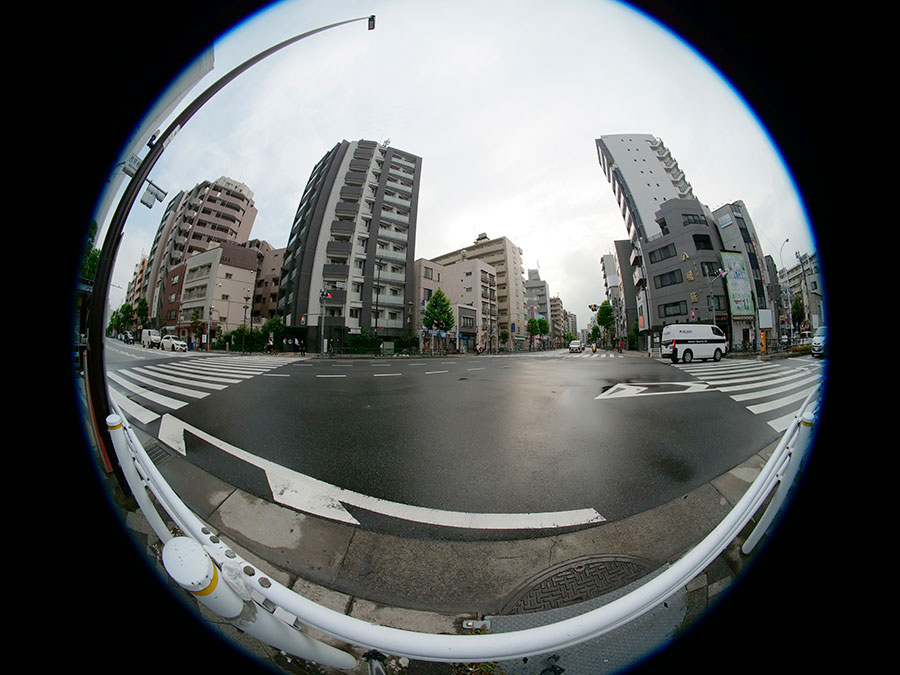
With an acrylic dome cover
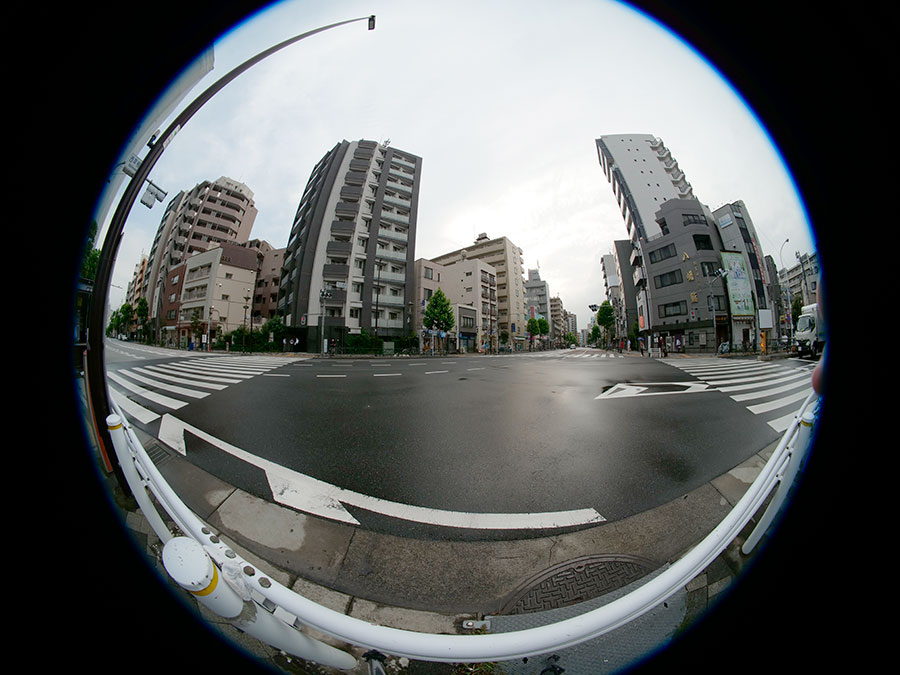
The lens used in the test was the Entaniya Fisheye HAL 200 MFT 4.2.
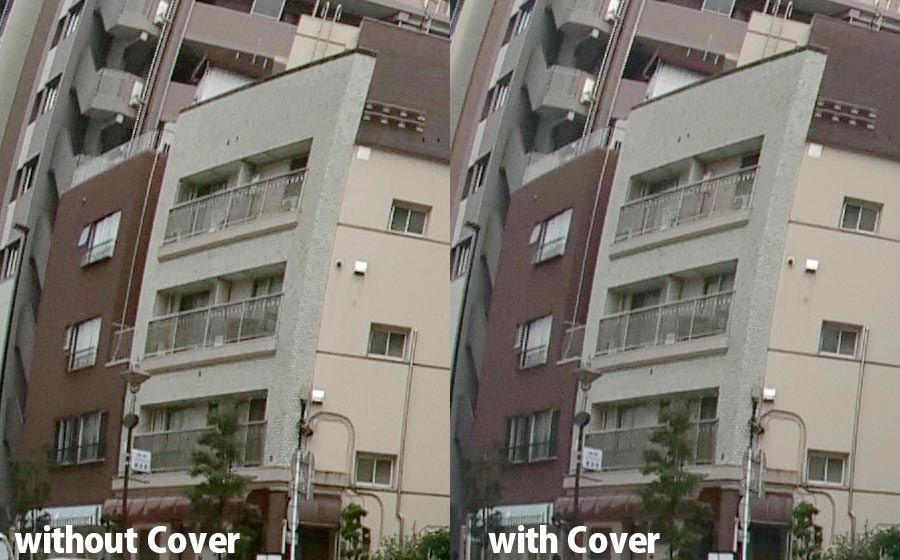
As with the HAL 250, I have the impression that the acrylic dome cover does not have a significant effect on the image quality of the HAL 200.
However, there were some differences in image quality depending on the size of the acrylic dome cover selected and its installation position, so it may be a good idea to experiment with different options. Incidentally, the results of this test were such that using an acrylic dome cover closer to the size of the lens had less effect on image quality.
You can download the original shooting samples from the button below.
How to protect a fisheye lens with an acrylic dome cover
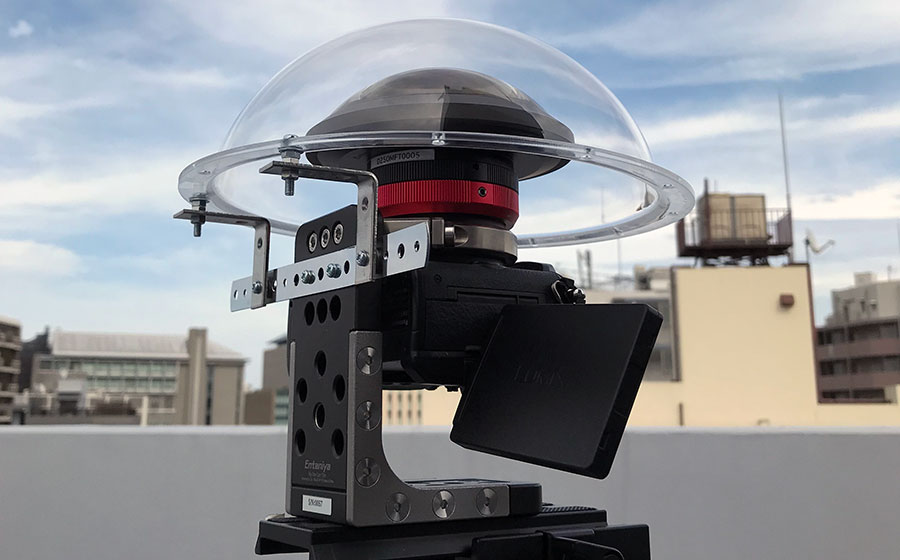
As mentioned at the beginning of this article, it is best to use the lens without a cover in order to get the full performance of the lens, but for shooting that may damage the lens, you may want to consider using an acrylic dome cover to protect the fisheye lens.
For example, when the camera is set up outdoors for long periods of time, the acrylic dome cover can be used to protect the lens and camera from unexpected rain.
In addition, we are sometimes asked for advice on how to protect the lens from flying rocks in situations where the wide-angle field of view of a fisheye lens is used to capture powerful scenes on an in-vehicle camera, etc. In such cases, we believe this can be an effective means of protection.
